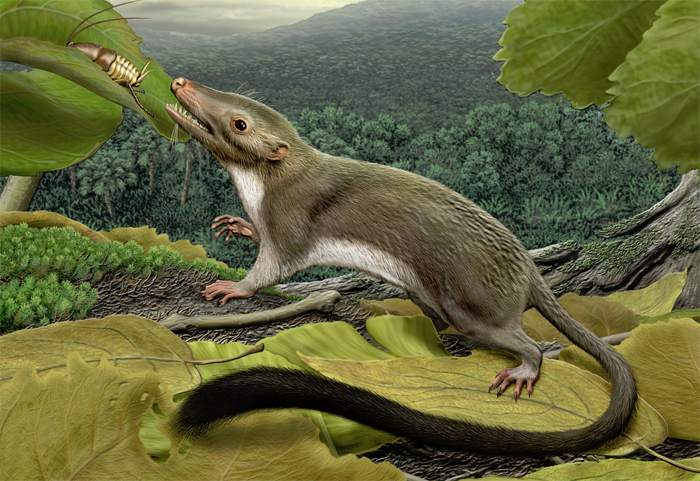MorphoBank Projects

by Molly Michelson
Earlier this year, scientists announced the mother of all placental mammals. Their discovery wasn’t due to an unburied fossil, but rather a database called MorphoBank.
The researchers used both genetic and physical traits of known animals (living and extinct) to reconstruct this common ancestor that likely diversified after the extinction of dinosaurs 65 million years ago.
The scientists recorded observational traits for 86 placental mammal species, including 40 fossil species. The resulting database contains more than 12,000 images that correspond to more than 4,500 traits detailing characteristics like the presence or absence of wings, teeth and certain bones, type of hair cover and brain structures. The dataset is about 10 times larger than information used in previous studies of mammal relationships. On MorphoBank, this study is known as Project 773. And it’s just one of nearly a thousand such projects…
MorphoBank began over ten years ago as a partnership between several institutions to create a “web application providing an online database and workspace for evolutionary research, specifically systematics (the science of determining the evolutionary relationships among species),” according to its website. The information is open to everyone and the framework provides access to computing power that scientists might not otherwise have.
Cassie Graff, the Early Childhood Program Lead here at the Academy, was an undergraduate at UC San Diego in 2009, when the San Diego Supercomputing Center (SDSC) was looking to beta test MorphoBank. The SDSC wanted to determine how actual researchers would use the application and reached out to their local colleagues.
Annalisa Berta, an evolutionary biologist at San Diego State University, was working on a long-term project to create a morphology matrix of whales at the time, and it seemed a perfect fit for MorphoBank. Berta and her team, which included Graff, entered several morphological characteristics of extinct and extant (living) whales into the database. Graff entered color patterns like streaks and saddles and flipper coloration as codes into the matrix. This work eventually became Project 182 on MorphoBank.
“The database includes not only morphological traits, but also can provide genetic data and images to create taxonomic trees,” Graff explains. “It can hold all of your research and later everyone can access it, anyone can download matrices.”
For a more recent project, MorphoBank approached Academy and UC Davis postdoc Hannah Wood. They asked about her recent publication on pelican spiders and wanted to make the morphological datasets within that article available. Generally these datasets appear as an appendix to a publication. “MorphoBank makes it much easier for other scientists to access the data,” says Wood. And it’s important that scientists have that access, she explains. Her co-author, the Academy’s Charles Griswold, agrees. “One could look at other, existing spiders to see similarities and identify a new find.” Their pelican spiders are Project 847 on MorphoBank.
As researchers work to revise and grow the tree of life, they need to build upon the work of scientists that came before—and leverage the work of their modern day colleagues. MorphoBank, along with similar applications, promises 21st-century solutions to studies that began centuries ago.